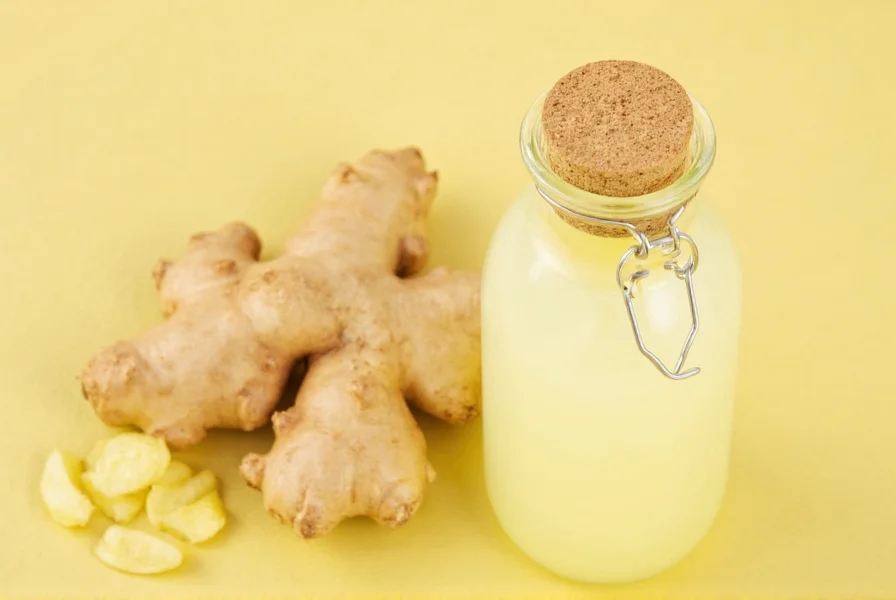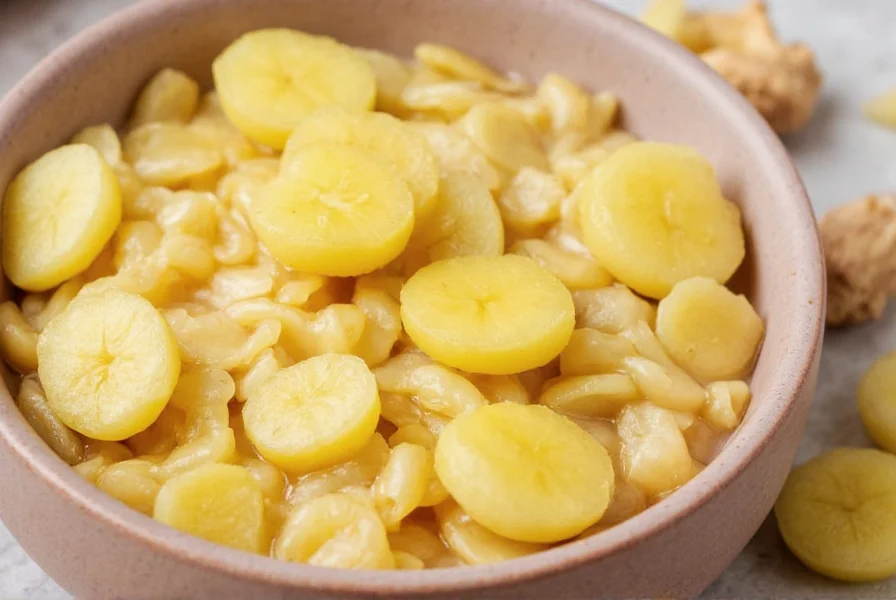Sweetened ginger transforms the pungent root into an accessible treat through a careful preservation process. The ginger rhizomes are peeled, sliced, and simmered in simple syrup until tender, then dried and coated with sugar. This method concentrates ginger's natural compounds while adding sweetness that appeals to broader palates. Understanding how to make sweetened ginger at home reveals why commercial varieties differ in texture and intensity.
What Makes Sweetened Ginger Unique
The magic happens during the simmering phase, where ginger's volatile compounds interact with sugar. This process preserves gingerol (the compound responsible for ginger's heat) while converting some to shogaol, which has a sharper, more concentrated flavor. The resulting product contains approximately 65-75% sugar by weight, with the remaining portion comprising ginger fiber, moisture, and active compounds.
| Ginger Type | Sugar Content | Shelf Life | Primary Uses |
|---|---|---|---|
| Sweetened (crystallized) | 65-75% | 6-12 months | Snacking, baking, tea |
| Preserved (in syrup) | 40-50% | 1-2 years | Cocktails, desserts |
| Fresh ginger | Natural sugars only | 2-3 weeks | Cooking, juicing |
Health Benefits of Sweetened Ginger
While the nutritional value of sweetened ginger differs from fresh due to added sugar, it retains significant bioactive compounds. Research shows that even in preserved form, ginger maintains 70-80% of its gingerol content, supporting digestive health and nausea relief. The health benefits of candied ginger include:
- Natural remedy for motion sickness and morning sickness
- Anti-inflammatory properties that may reduce muscle pain
- Digestive aid that stimulates saliva and bile production
- Antioxidant effects that combat oxidative stress
Consuming 1-2 pieces (about 10g) provides therapeutic benefits without excessive sugar intake. For those monitoring sugar consumption, sweetened ginger vs crystallized ginger comparisons show minimal nutritional differences - both contain similar sugar concentrations.

Culinary Applications
Chefs value sweetened ginger for its consistent flavor and texture. Unlike fresh ginger, which varies by season and origin, preserved ginger offers reliable heat levels. Try these applications:
- Chop finely for gingerbread or spice cookies
- Infuse in hot water for soothing ginger tea
- Add to fruit salads for sweet-spicy contrast
- Pair with chocolate in desserts
- Use in marinades for Asian-inspired dishes
Homemade Sweetened Ginger Recipe
Creating homemade ginger candy recipe variations allows control over sugar content and spice level. Follow this reliable method:
- Peel and slice 1 cup fresh ginger into 1/8-inch pieces
- Simmer in 1 cup water for 15 minutes to reduce bitterness
- Add 1 cup sugar and 1/4 cup water, simmer 30-40 minutes until translucent
- Drain, toss in additional sugar, and dry on wire rack
- Store in airtight container with parchment between layers
For less sweet versions, reduce sugar to 3/4 cup or substitute honey. The storage tips for sweetened ginger include keeping it in a cool, dark place with minimal humidity exposure. Properly stored, homemade versions last 3-4 months.

Safety and Consumption Guidelines
While generally safe, sweetened ginger contains concentrated ginger compounds. Adults should limit intake to 4 grams daily (about 8-10 pieces). Those on blood thinners or with gallstone issues should consult physicians before regular consumption. The sugar content makes portion control essential - a single serving (10g) contains approximately 7g sugar.
Conclusion
Sweetened ginger bridges traditional medicinal uses with modern culinary applications. Its versatility in both therapeutic and gastronomic contexts makes it valuable for home pantries. Whether purchased or made using how to make sweetened ginger at home techniques, this preserved form offers consistent flavor and extended shelf life compared to fresh alternatives. Understanding proper storage and consumption guidelines ensures you maximize both enjoyment and health benefits.
Frequently Asked Questions
What's the difference between crystallized and candied ginger?
Crystallized and candied ginger are essentially the same product with regional naming differences. Both involve simmering ginger in sugar syrup and coating with sugar crystals. The terms are used interchangeably in culinary contexts, though some manufacturers distinguish them by sugar coating thickness.
Can sweetened ginger help with nausea?
Yes, multiple studies confirm that the gingerols in sweetened ginger effectively reduce nausea. Consuming 1-2 pieces (1-2 grams) provides sufficient active compounds to alleviate motion sickness, morning sickness, and postoperative nausea without the sugar content causing issues.
How should I store homemade sweetened ginger?
Store homemade sweetened ginger in an airtight container with parchment paper between layers to prevent sticking. Keep in a cool, dark place away from humidity. Properly stored, it maintains quality for 3-4 months. For extended shelf life, refrigerate up to 6 months or freeze up to 1 year.
Is sweetened ginger good for digestion?
Yes, sweetened ginger retains ginger's digestive benefits. The preserved form stimulates digestive enzymes and gastric motility. Consuming 1-2 small pieces after meals can reduce bloating and improve digestion. The sugar content doesn't negate these benefits when consumed in moderation (10g serving).











 浙公网安备
33010002000092号
浙公网安备
33010002000092号 浙B2-20120091-4
浙B2-20120091-4